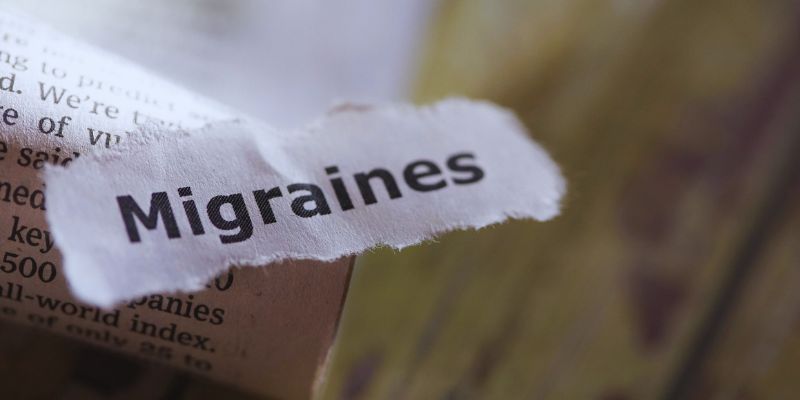Goosebumps: Why Do We Get Them and What Do They Mean?
Advertisement
Goosebumps, tiny bumps appearing on the skin, are a fascinating physical response linked to emotion and environmental triggers. This reaction stems from our evolutionary past but holds diverse meanings today. From chills caused by cold to emotional highs from music or memories, goosebumps remain a universal, yet deeply personal, expression of human experience.
What Are Goosebumps?

Goosebumps, also known as cutis anserina or piloerection, is a physiological response that causes small bumps to appear on the surface of our skin. This results in a slight skin elevation, giving it a "goosebumps" appearance.
The Science Behind Goosebumps:

Goosebumps are controlled by the autonomic nervous system, which manages involuntary bodily functions like heartbeat, breathing, and digestion. When the body encounters a sudden drop in temperature, emotional triggers, or a perceived threat, the sympathetic branch of the autonomic nervous system kicks into action.
This activates the tiny arrector pili muscles attached to hair follicles, causing them to contract—a reaction known as the pilomotor reflex. During this process, the adrenal glands release adrenaline, a hormone that primes the body for a "fight or flight" response. Adrenaline causes goosebumps, heightens heart rate, and boosts energy levels.
In the case of emotional goosebumps—such as those sparked by a moving piece of music or an inspiring speech—the release of dopamine, a neurotransmitter tied to pleasure and reward, may also play a role. Together, these chemical messengers create a powerful physiological and emotional reaction, deepening our connection to the world around us and the experiences that move us.
Evolutionary Purpose of Goosebumps:
The physical reaction known as goosebumps existed beforehand to serve essential survival needs when our ancestral species needed them. Goosebumps serve to protect predators by expanding our physical size through hair elevation.
The action of arrector pili muscles elevating hair made ancestral humans, as well as other mammals, appear larger and harder to approach, which potentially warned away threats as predators. Most of these defensive responses operate in present animals because cats and porcupines also present this reaction to threatening situations.
Goosebumps serve an important function when people experience low temperatures. As the pilomotor reflex elevates body hair, the trapped air creates insulation to protect body heat. Human body hair has become scarce in current times, thus diminishing this body defense mechanism although the ability exists as evidence of our ancient origins.
Our ancestors survived threatening conditions during evolution because their goosebump responses helped protect and heat their bodies while defending themselves from danger. These current reactions maintain their existence in contemporary society, although they no longer serve vital survival purposes from our evolutionary history.
Emotions and Goosebumps:
Goosebumps are not just a response to physical stimuli but are deeply connected to emotional experiences. Intense feelings like awe, fear, or joy can activate the autonomic nervous system, triggering the pilomotor reflex.
This explains why powerful moments in music, movies, or storytelling often leave us with that tingly sensation. For instance, a symphony's crescendo or a climactic scene in a film taps into our emotional core, evoking goosebumps.
Music is a particularly strong trigger, with certain melodies and harmonies producing a near-universal visceral response. Similarly, scenes of triumph, loss, or reconciliation in stories resonate deeply, amplifying emotional arousal.
Nostalgia also plays a key role, as revisiting cherished memories through a song, scent, or photograph often stirs a mix of longing and warmth, leading to goosebumps. These moments highlight the powerful connection between our emotions, body, and environment.
Psychological Interpretation of Goosebumps:
1. Link to emotional arousal and heightened sensitivity:
Goosebumps are often associated with aspects of life that we find deeply meaningful, intriguing, or emotionally charged. Whether it's a moment of awe in nature, a piece of art that captures our imagination, or an experience shared with loved ones, goosebumps can be seen as a physiological marker for these intense emotions.
2. Relationship to fear and excitement:
Goosebumps are not only a response to positive emotions but can also be triggered by negative ones, such as fear or anxiety. In fact, the pilomotor reflex is closely linked with our "fight or flight" response, preparing us for potential danger and making us more alert. This connection to fear and danger highlights how goosebumps served as an adaptive mechanism for our ancestors.
3. Role in memory formation and retrieval:
The intense emotional experiences that trigger goosebumps can also help in the formation and retrieval of memories. Studies have shown that heightened emotional states, such as those associated with goosebumps, are linked to improved recall and memory consolidation. This connection may explain why we often remember significant moments in our lives with vivid detail.
Cultural Significance of Goosebumps:
1. Superstitions Surrounding Goosebumps
In many cultures, goosebumps have been linked to superstitions, often seen as a sign of spirits, supernatural forces, or impending change. These beliefs tie goosebumps to moments of fear, awe, or shifts in energy, reflecting a connection between physical reactions and invisible forces.
2. Representation in Literature and Art
Goosebumps symbolize intense emotions like fear, awe, or inspiration in literature and art. Writers use them to evoke vivid emotional states, while visual artists depict them to highlight the physical embodiment of human emotion.
3. Cross-Cultural Interpretations
Goosebumps hold varied meanings across cultures. Some Indigenous traditions view them as a sign of spiritual alignment, while Eastern philosophies link them to energy flow and heightened awareness. These interpretations show the diverse significance of this universal physical response.
Coping with Excessive Goosebumps:
When Could Goosebumps Be a Problem?
Goosebumps are typically a natural response to cold or strong emotions. However, frequent or unexplained goosebumps may signal an underlying medical issue.
Possible Causes:
Excessive goosebumps can be linked to:
- Neurological disorders like peripheral neuropathy or autonomic dysfunction.
- Hormonal imbalances, including hypothyroidism.
- Skin conditions or allergic reactions.
Treatment Options:
Effective treatment starts with identifying the cause. A healthcare professional may recommend:
- Medications for hormonal or neurological issues.
- Topical therapies for skin-related problems.
- Stress management techniques for anxiety-induced cases.
Conclusion:
Goosebumps have a rich history and deep connections to our biology, emotions, and culture. From their evolutionary role in protecting us from danger to their ability to evoke intense emotional experiences, goosebumps are a powerful physiological response that continues to fascinate and intrigue us. While they may seem like a minor physical reaction, understanding the significance of goosebumps can give us insights into our own selves and our place in the world.
On this page
What Are Goosebumps? The Science Behind Goosebumps: Evolutionary Purpose of Goosebumps: Emotions and Goosebumps: Psychological Interpretation of Goosebumps: 1. Link to emotional arousal and heightened sensitivity: 2. Relationship to fear and excitement: 3. Role in memory formation and retrieval: Cultural Significance of Goosebumps: 1. Superstitions Surrounding Goosebumps 2. Representation in Literature and Art 3. Cross-Cultural Interpretations Coping with Excessive Goosebumps: When Could Goosebumps Be a Problem? Possible Causes: Treatment Options: Conclusion:Advertisement












